I just want to put on the table two or three doubts i have about the classification of Nautilus Species.
There are only 3 definite species of Nautilus. These are: N. pompilius (with numerous synonyms), N. macromphalus (differing only in shell form, but consistent and different enough to be distinct) and N. scrobiculatus (Allonautilus is dead). N. perforatus is probably just a local morph of N. scrobiculatus; N. stenomphalus differs in a few characters from N. pompilius and is possibly a good species on anatomical and molecular (not shell) grounds.
The umbilicus in involute species can be infilled with callus material, as is normally (but not always) the case with N. pompilius. The callus is possibly secreted by the hood. The umbilicus of N. macrompalus and N. scrobiculatus is too wide for infilling.
At present reserch is beginning on a probable Triassic species of Nautilus, which would extend the timerange back from the Eocene. These shells do not seem to differ at greater than species level from N. scrobiculatus.
Speaking of N. perforatus, I would like some specimens for research purposes… if anyone knows where I can get them at a reasonable price, please contact me by p-mail:
[email protected]

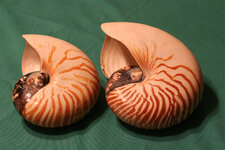
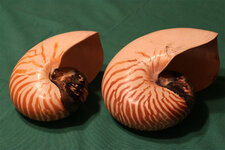
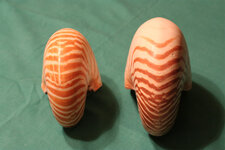
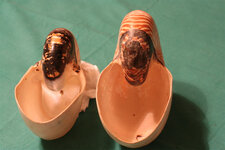
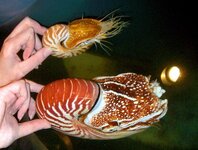
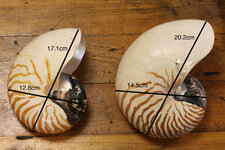
 to TONMO! I'll not too up on the systematics of nautilus, but at least number 3 I can address: from what I know about nautilus shell growth, I can't think of any mechanism that would close an open umbilicus later in life, since there's not really any tissue that secretes new shell anywhere except the mantle cavity, so I would be very surprised to find that that changed between juveniles and adults. I haven't been paying attention to any taxonomy since people have started doing molecular and developmental studies of nautilus, so I don't know if that's caused any new excitement in the classifications.
to TONMO! I'll not too up on the systematics of nautilus, but at least number 3 I can address: from what I know about nautilus shell growth, I can't think of any mechanism that would close an open umbilicus later in life, since there's not really any tissue that secretes new shell anywhere except the mantle cavity, so I would be very surprised to find that that changed between juveniles and adults. I haven't been paying attention to any taxonomy since people have started doing molecular and developmental studies of nautilus, so I don't know if that's caused any new excitement in the classifications.